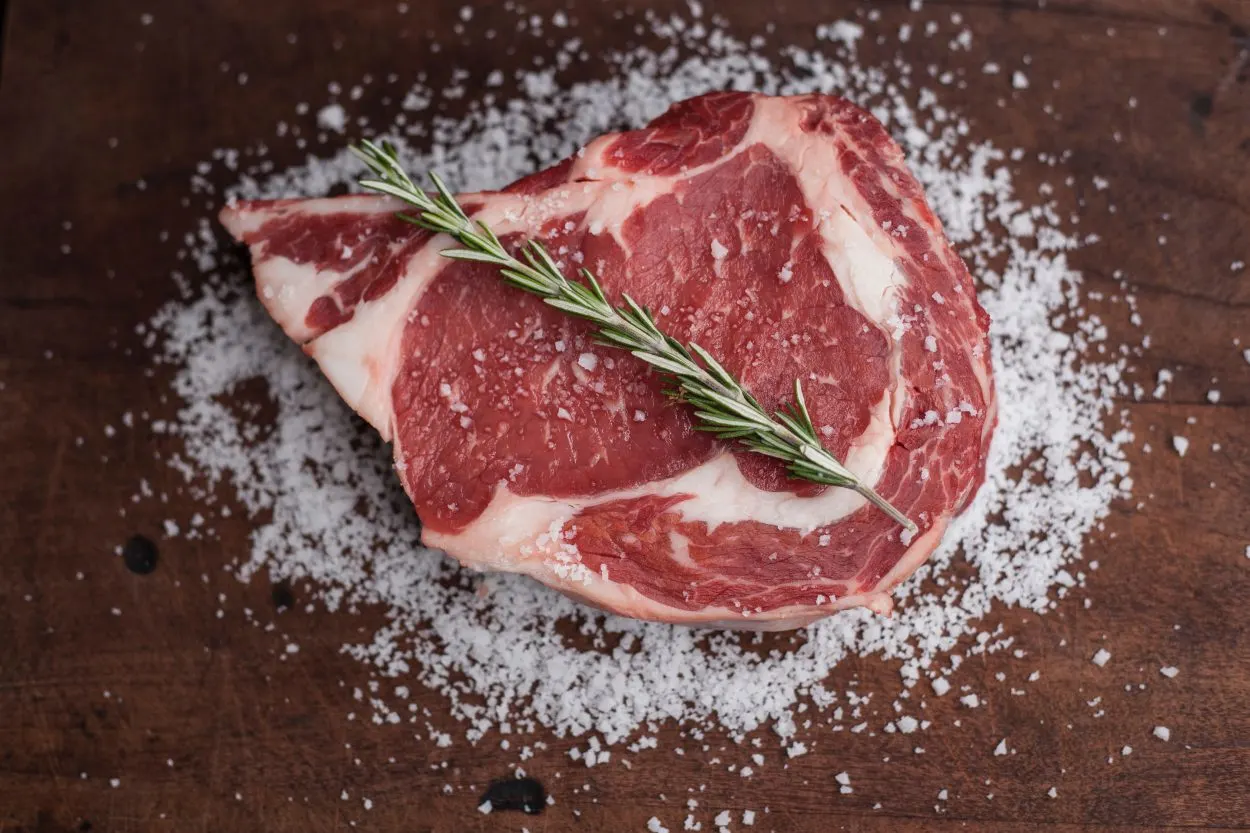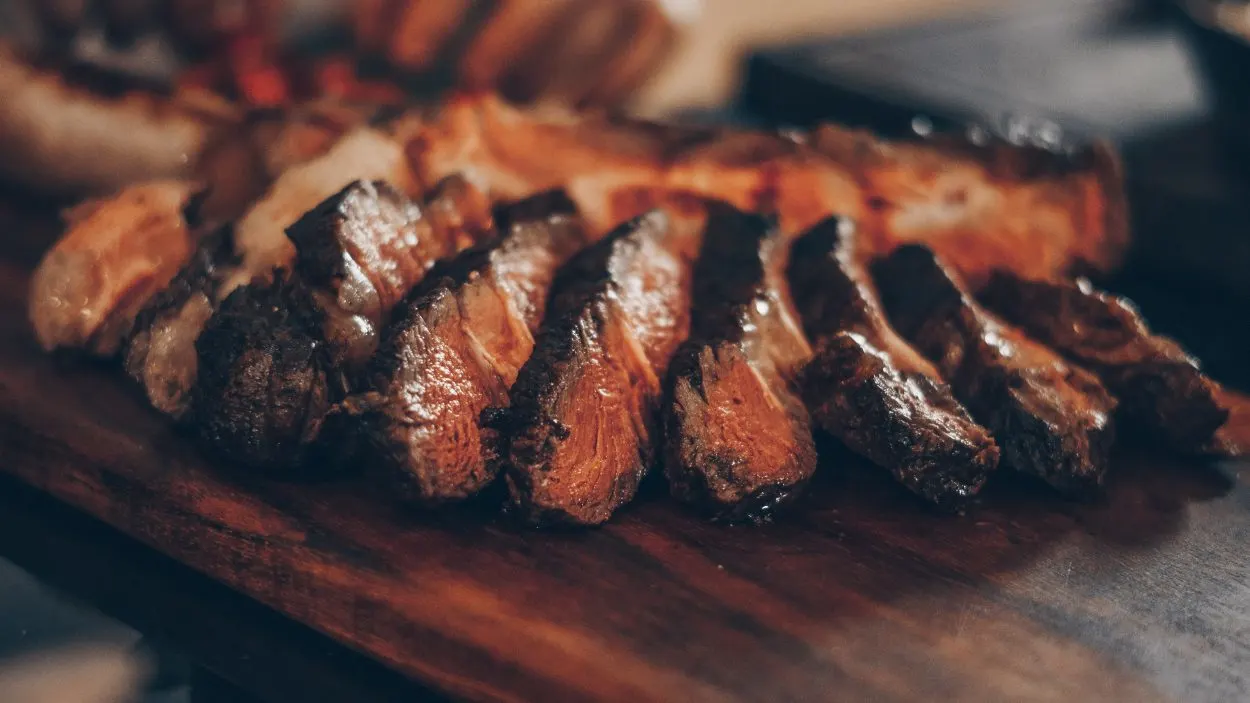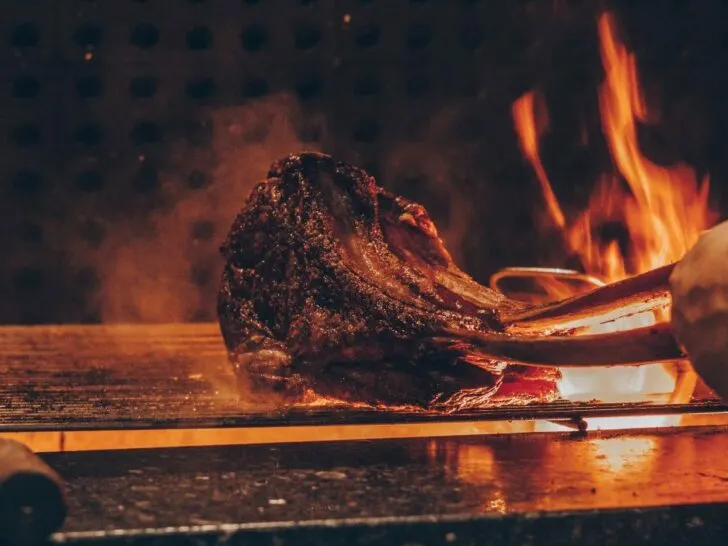Steaks are one of the most delicious creations; it’s basically a piece of meat cooked in a certain way. Most people cook it in their own way; some like it with spices or sauce, and some like to season it just with salt. You may not know this, but the term steak goes way back to the 15th century in Scandinavia; people used to call a thick slice of meat ‘steik,’ a Norse word. While the term steak has Norse roots, it’s claimed that Italy can be the birthplace of steak.
Steak has become one of the most expensive dishes, as it should. Some people make it at home, while some go to restaurants, as there are many restaurants specifically for steak.
Steak can be made in numerous ways; you can get it cooked as rare, medium-rare, or well done. There are many other ways; people can’t differentiate between rare, Pittsburgh rare, and rare blue.
| Rare | Blue Rare | Pittsburgh Rare |
| Seared outside | Lightly seared outside | Charred on the outside |
| Bright red and tender inside | Soft and tender on the inside | Rare to raw from the inside |
| The ideal temperature to cook is 125°-130°F | Idea temperature is between 115 °F and 120 °F | internal temperature should be 110 F (43 C) |

A rare steak will have a seared and dark outer layer, but then it’ll be bright red and soft from the inside. They’re mostly hot on the outside but warm to cool from the inside.
A Pittsburg rare steak is cooked at a high temperature in a short period of time to get a charred texture on the outside but rare to raw on the inside. The term “Pittsburg rare” is used in most American Midwest and Eastern Seaboard, but the sear cooking methods of meat are known elsewhere as Chicago-style-rare, and in Pittsburg itself, it’s known as black or blue.
Why is a very rare steak called “Blue”?
Blue steak also goes with another term, which is extra rare steak. You must have an idea about blue rare steak by the term extra rare steak; nonetheless, let me elaborate. Blue rare steaks are lightly seared on the outside and are red from the inside. Their color gets purplish and bluish, as their name suggests. The steak is cooked for a short period of time; this way, it gets soft and tender from the inside, which is what most people prefer. The steak’s interior temperature shouldn’t exceed 115℉ to achieve the blue rare.
There’s much difference between rare, blue rare, and Pittsburg rare. Although among these three, Pittsburg rare is somewhat different than rare and blue rare. The outside of the Pittsburg rare steak is charred, while the outside of rare and blue rare is lightly seared.
Keep reading to know more.
What’s a Pittsburgh rare?

Pittsburgh rare is a steak that is cooked on high heat for a short period of time. This process gives the steak a charred texture on the outside but still is rare to raw from the inside.
Pittsburgh rare steak should have an internal temperature of 110 F (43 C.)
The origin of the term “Pittsburgh Rare” has many possible explanations; for example, there was an accidental charring of the steak at a Pittsburgh restaurant, but the chef introduced it as the “Pittsburgh rare steak.”
Is Pittsburgh Rare the same as blue rare?
Blue rare is lightly seared on the outside and red on the inside, while Pittsburgh rare is charred on the outside and rare to raw on the inside.
A cooking method that involves the charring of meat on high heat is considered a Pittsburgh rare method. In Pittsburgh itself, this method is often called black or blue. Black is for the charring on the outside; blue refers to the rare inside of the steak.
As the Pittsburgh rare is also called blue, people sometimes confuse it with the blue rare steak. Pittsburgh and Blue Rare are different steaks, as both are cooked differently.

What is the difference between rare and blue steak?
The difference between rare and blue rare is that rare isn’t cooked throughout to the center, but a blue steak is always cooked all the way to the center.
There isn’t much difference between rare and blue rare, but both are different steaks. A rare steak is seared and dark on the outside, and it’s achieved by merely searing it for a short time to get a seared and a dark layer, but let the 75% meat become red, which means Rare.
A blue steak is seared on the outside. Moreover, a blue steak shouldn’t be cooked for too long. Its ideal interior temperature shouldn’t exceed 115℉.
Here is a video that shows how to cook a perfect yet simple blue rare ribeye steak.
Which steak rarity is the best?
Every person has different taste buds; therefore every person likes their steak in a different way. Although, the best kind of rarity is supposed to be Sirloin.
Here is the list of steaks that are best served as rare
Rare
- Top Sirloin
- Flatiron
- Palermo
Raw
- Top round
- Sirloin tip
Medium-Rare
- Ribeye
- Tri-tip
- Sirloin flap
- Chuck Steak
- T-bone
- Filet mignon
- NY strip shell
Medium
- Skirt steak
- Chuck flap
- Chuck short ribs
Rare steaks are the best kinds of steak as the outside is seared just the right amount, and the inside is red, making it soft and tender.
To Conclude

- This article offers insights into the preparation and characteristics of rare, blue rare, and Pittsburgh rare steaks.
- Rare steak, with a bright red and tender interior, is grilled on the outside and cooked at around 125°F.
- Blue rare, also known as extra rare, is lightly seared, remains red inside, and is cooked briefly. The interior temperature does not exceed 115°F.
- Pittsburgh rare is cooked at high heat, resulting in a charred exterior. It remains rare to raw inside, with an internal temperature of 110°F.
- The article clarifies that Pittsburgh rare and blue rare are distinct. Although there is some regional naming confusion.
- Personal preferences dictate the best steak rarity. Rare steaks are often favored for their seared exterior and tender interior.
- Understanding these steak rarities allows steak enthusiasts to make informed choices. It depends on their taste preferences.

